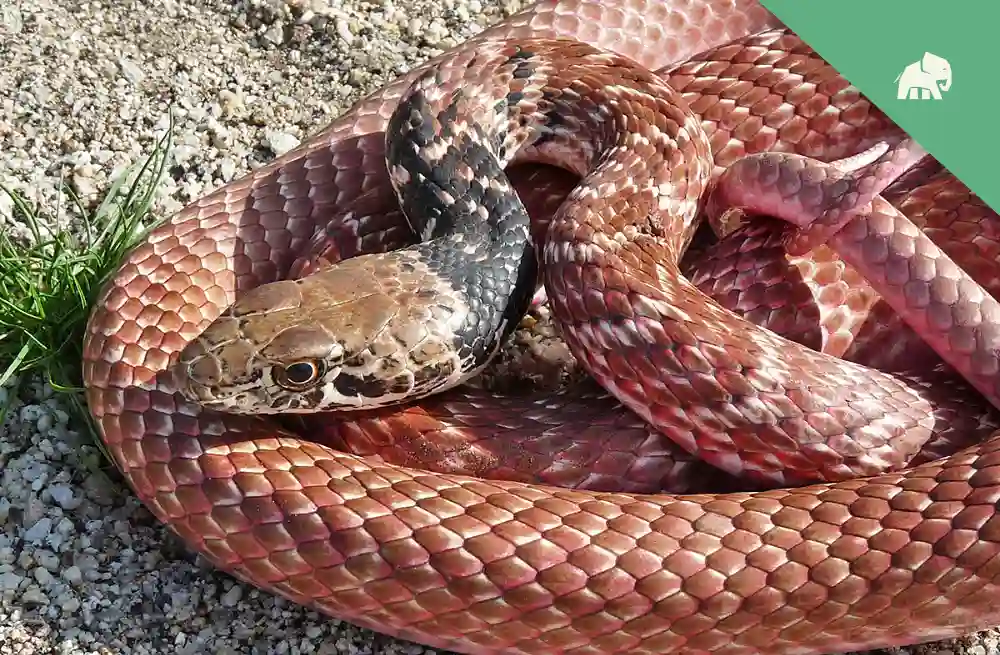Did you know that aardvarks are one of the most unique mammals in the world? With their long snouts, sticky tongues, and nocturnal habits, these creatures have captivated the attention of animal lovers for centuries.
In this article, we will delve into the fascinating world of aardvarks and explore their unique characteristics, behaviors, and habitats. From their diet and predators to their social structure and conservation status, we will provide a comprehensive overview of everything you need to know about these remarkable creatures.
So, whether you’re a wildlife enthusiast or simply curious about the natural world, read on to discover the secrets of the aardvark.
| Category | Details |
|---|---|
| Kingdom | Animalia |
| Phylum | Chordata |
| Class | Mammalia |
| Order | Tubulidentata |
| Family | Orycteropodidae |
| Genus | Orycteropus |
| Species | Orycteropus afer |
| Niche | Insectivore |
| Length | 4-5 ft (1.2-1.5 m) |
| Weight | 110-180 lbs (50-82 kg) |
| Lifespan | Up to 23 years in the wild |
| Social Structure | Mostly solitary, but sometimes form small groups |
| Conservation Status | Least Concern (IUCN Red List) |
| Preferred Habitat | Savannas, grasslands, and forests in sub-Saharan Africa |
| Average Number of Offspring | 1 |
| Main Food Items | Ants and termites |
| Predators | Lions, leopards, hyenas, wild dogs, pythons, and humans |
Anatomy and Physical Characteristics
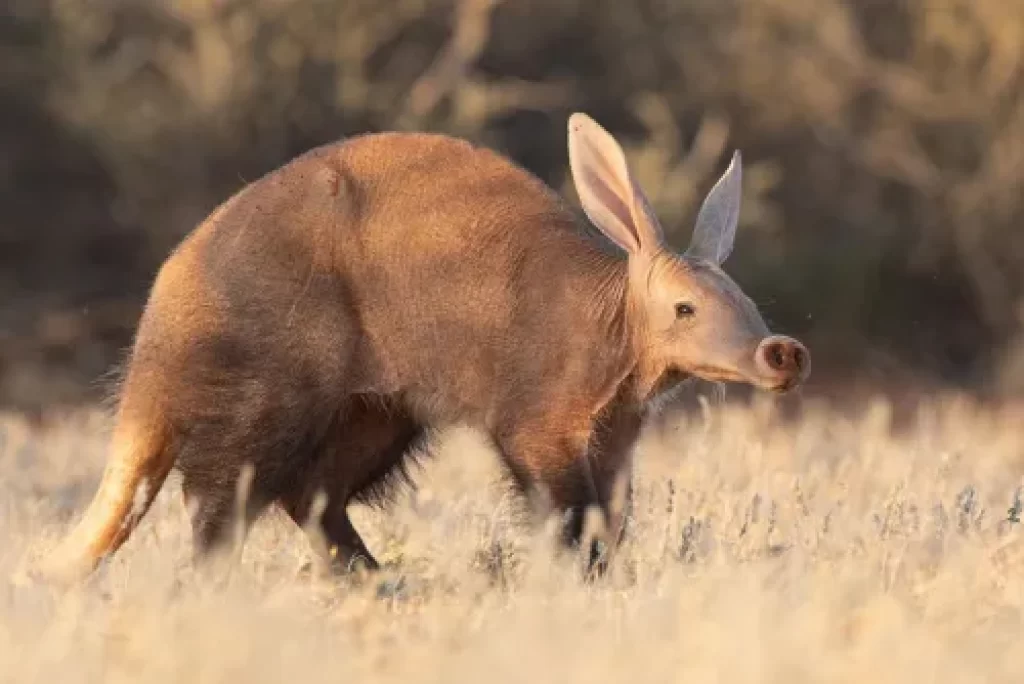
Did you know that aardvarks have a unique appearance and set of physical characteristics that help them thrive in their African habitats?
In this section, we will explore the anatomy and physical characteristics of aardvarks, including their size, shape, and distinctive features, and how they are adapted for survival in the wild.
Aardvarks are fascinating creatures with a distinctive appearance that sets them apart from other mammals. They are nocturnal animals that are primarily found in sub-Saharan Africa. Here are some of the key physical characteristics of aardvarks:
Size and Shape
Aardvarks are relatively small animals, typically measuring between 3 and 4 feet in length and standing about 2 feet tall at the shoulder. They have a robust, pig-like body shape with a large head, long snout, and powerful limbs that are adapted for digging. Aardvarks have a sturdy frame and are surprisingly fast runners, capable of reaching speeds of up to 30 miles per hour when threatened.
Distinctive Features
One of the most distinctive features of the aardvark is its long, narrow snout, which it uses to sniff out insects and other small prey. Aardvarks also have large, floppy ears that can be closed to keep out dirt and debris while digging. Their eyesight is poor, but they have an excellent sense of smell that allows them to locate food in the dark. Aardvarks have tough, scaly skin that helps protect them from insect bites and other injuries.
Adaptations for Survival
The aardvark’s unique physical characteristics are well-suited for its lifestyle as a burrowing insectivore. Aardvarks have powerful claws on their front feet that they use to dig burrows and tear apart termite mounds. They also have thick, muscular tongues that can extend up to a foot and a half to capture insects. Their digestive system is adapted to process a high volume of insects, with a particularly long and complex intestine that extracts nutrients efficiently.
Habitat and Range
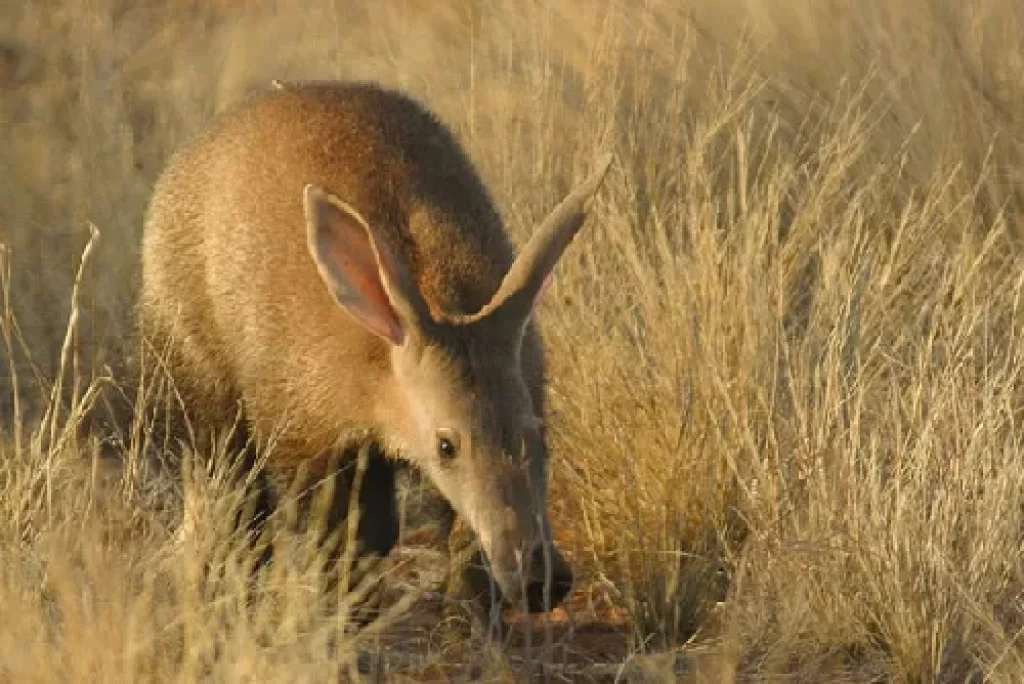
The aardvark is found in a range of habitats across sub-Saharan Africa, including savannas, grasslands, and woodlands. They are also known to inhabit arid areas, such as deserts and scrublands, as well as rainforests and swamps.
The aardvark’s habitat is largely determined by the availability of food, which consists mainly of ants and termites. As such, they are found in areas with high termite and ant populations. They are also known to adapt to areas with different soil types, as they dig burrows for shelter and foraging.
Aardvarks are typically found in areas with sandy soil, which allows them to easily excavate their burrows. They prefer areas with sufficient vegetation cover, which helps to provide shade and shelter from the sun. Aardvarks are also known to avoid areas with high human activity, as they are sensitive to noise and disturbance.
Aardvarks have several adaptations that allow them to survive in their diverse range of habitats. For example, their thick skin protects them from bites and stings from the insects they consume. Their powerful claws are also well-adapted for digging and excavating burrows in a variety of soils.
Unfortunately, aardvark populations are facing numerous threats, including habitat loss and fragmentation due to human activities such as farming and urbanization. In addition, aardvarks are hunted for their meat, which is considered a delicacy in some cultures. Climate change is also emerging as a potential threat, as it may disrupt the availability of food and alter the aardvark’s range and habitat.
Due to these threats, aardvarks are listed as a species of “Least Concern” on the International Union for Conservation of Nature (IUCN) Red List. However, there is concern that their populations may decline in the future if conservation efforts are not implemented to protect their habitats and address hunting pressures.
Behavior and Lifestyle
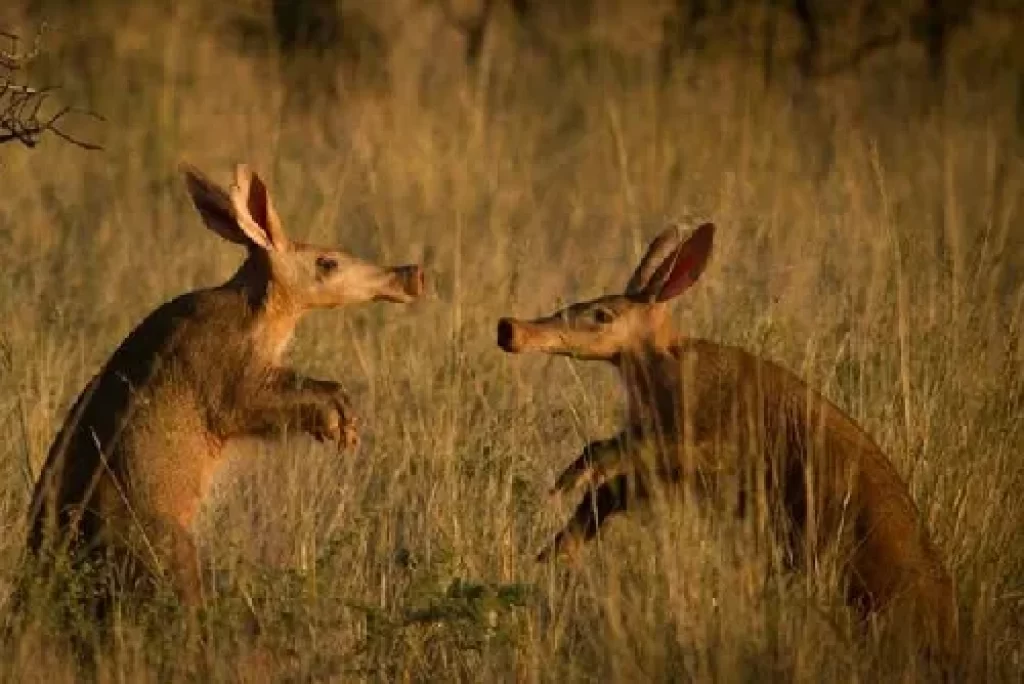
Aardvarks have several unique behaviors and adaptations that make them fascinating creatures to study. This section will delve into their burrowing habits, feeding habits, and social structure.
Burrowing Habits
Aardvarks often create complex burrow systems with multiple entrances and chambers, allowing them to easily escape from predators such as lions, leopards, and hyenas. Their burrows also serve as a shelter from extreme temperatures, as they are able to regulate their body temperature by staying underground during the heat of the day and emerging at night when it is cooler.
In addition to creating their own burrows, aardvarks will also use abandoned burrows created by other animals, such as warthogs or anteaters. They may even share their burrows with other aardvarks or other species such as springhares or porcupines.
Interestingly, aardvarks are also known for their ability to create “false burrows” as a defense mechanism against predators. They may create several fake burrows in their range to throw off predators and make it harder for them to locate the aardvark’s true burrow.
Feeding Habits
Aardvarks are primarily nocturnal and feed almost exclusively on ants and termites. They use their long, sticky tongue to capture their prey, and their powerful claws to tear open termite mounds and ant hills. Aardvarks have a specialized digestive system that allows them to consume large amounts of insects without suffering from indigestion. They can eat up to 50,000 insects in a single night!
Social Structure
Aardvarks are solitary animals, and they only come together to mate. Males have a larger range than females and will travel long distances in search of a mate. They mark their territory with their scent, and they will defend it vigorously if necessary. Females give birth to a single offspring at a time, and the young will stay with their mother for up to 6 months before venturing out on their own.
Interesting Facts
- Aardvarks have very poor eyesight but an excellent sense of smell, which they use to locate their prey.
- Aardvarks have a very low body temperature, which allows them to conserve energy while they sleep during the day.
- Aardvarks are known for their distinctive snuffling noise, which they make while they are foraging for food.
Diet and Nutrition
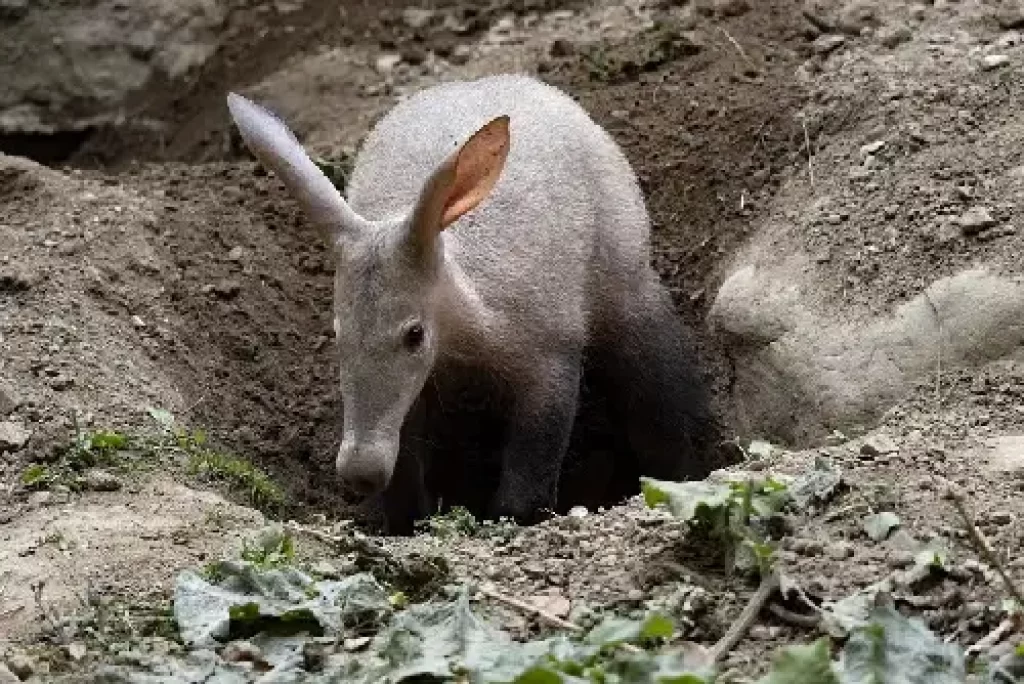
Aardvarks are nocturnal and primarily feed on termites, ants, and other small insects. They have an excellent sense of smell and use it to locate their prey. Using their long snouts, aardvarks will sniff out termite mounds and ant hills, then use their powerful claws to dig into the structures and extract the insects.
Although aardvarks are primarily insectivores, they have been known to supplement their diet with other plant materials such as fruits, tubers, and bulbs. In times of drought or food scarcity, they may also resort to eating carrion or scavenging from the kills of other predators.
Aardvarks have a unique digestive system that is adapted to their insectivorous diet. They have a long, narrow tongue that can extend up to 30 centimeters, allowing them to reach deep into termite mounds and ant hills. Their stomach is also highly specialized, with thick muscular walls that can grind up and digest insect exoskeletons. Additionally, they have a large caecum, a blind-ended pouch between the small and large intestines, which is home to a rich population of bacteria that help break down cellulose and other plant materials.
While aardvarks may not consume large quantities of food, their diet is highly nutritious. Insects are rich in protein and fat, providing a high-energy food source for the aardvark’s active lifestyle. The plant materials they consume also provide valuable nutrients, such as vitamins and minerals, which are essential for their health and well-being.
Conclusion
Aardvarks are fascinating animals that have adapted to a unique set of environmental conditions. From their burrowing habits and feeding behaviors to their physical adaptations and social structure, aardvarks are truly one-of-a-kind creatures.
Their long snouts and powerful claws allow them to dig extensive burrow systems that provide them with protection from predators and the elements. Their diet, consisting mainly of ants and termites, is nutritionally rich and has allowed them to thrive in a variety of habitats across Africa.
Unfortunately, aardvarks are facing a number of threats, including habitat loss, poaching, and human-wildlife conflict. As a result, they are classified as a species of “Least Concern” on the IUCN Red List of Threatened Species. It is important that we continue to study and protect these unique animals so that they can continue to play an important role in their ecosystems.
If you want to learn more about aardvarks and their behavior, you can check out the resources provided by the African Wildlife Foundation, National Geographic, or other reputable sources.
Aardvarks FAQ’s
Q: What is an Aardvark?
A: An Aardvark is a nocturnal mammal that is native to Africa. It is known for its long snout, which it uses to search for food, and its powerful digging abilities.
Q: What does the name Aardvark mean?
A: The name Aardvark means “earth pig” in Afrikaans. Despite its name, the Aardvark is not closely related to pigs and is actually the only living species in the order Tubulidentata.
Q: How big is an Aardvark?
A: An adult Aardvark can weigh between 110 and 180 pounds and stand about 2-3 feet tall at the shoulder. They have a stocky build and a long, pointed snout that can reach up to 12 inches in length.
Q: What do Aardvarks eat?
A: Aardvarks are primarily insectivores and feed on termites and ants. They use their long, sticky tongue to capture insects from their nests and can consume thousands of insects in a single night.
Q: Where do Aardvarks live?
A: Aardvarks are found throughout Africa, south of the Sahara Desert. They prefer to live in savannas, grasslands, and other open habitats with plenty of termite mounds.
Q: Are Aardvarks endangered?
A: Aardvarks are not currently considered endangered, although they are threatened by habitat loss and hunting. They are also vulnerable to diseases such as tuberculosis and foot-and-mouth disease.
Q: Can Aardvarks defend themselves?
A: Aardvarks have thick skin and powerful claws, which they can use to defend themselves from predators such as lions and hyenas. They can also dig a hole in the ground and hide if they feel threatened.
Q: Do Aardvarks have any unique adaptations?
A: Aardvarks have several unique adaptations that help them survive in their environment. Their long snout is specially adapted for digging and searching for food, and their thick skin protects them from insect bites. They also have strong legs and powerful claws for digging and running.



